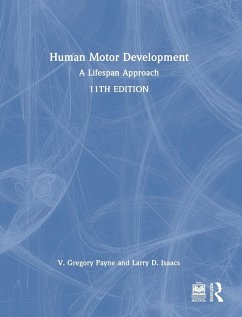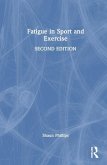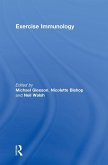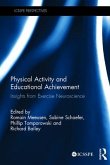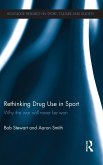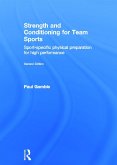- Gebundenes Buch
- Merkliste
- Auf die Merkliste
- Bewerten Bewerten
- Teilen
- Produkt teilen
- Produkterinnerung
- Produkterinnerung
The book uses a holistic approach and emphasizes the importance of intellectual, social, and physical development and their impact on human motor development at all ages.
Andere Kunden interessierten sich auch für
![The Physiology of Aerobic Capacity in Women The Physiology of Aerobic Capacity in Women]() David Montero BarrilThe Physiology of Aerobic Capacity in Women189,99 €
David Montero BarrilThe Physiology of Aerobic Capacity in Women189,99 €![Fatigue in Sport and Exercise Fatigue in Sport and Exercise]() Shaun PhillipsFatigue in Sport and Exercise180,99 €
Shaun PhillipsFatigue in Sport and Exercise180,99 €![Exercise Immunology Exercise Immunology]() Exercise Immunology239,99 €
Exercise Immunology239,99 €![Physical Activity and Educational Achievement Physical Activity and Educational Achievement]() Physical Activity and Educational Achievement188,99 €
Physical Activity and Educational Achievement188,99 €![Rethinking Drug Use in Sport Rethinking Drug Use in Sport]() Bob StewartRethinking Drug Use in Sport196,99 €
Bob StewartRethinking Drug Use in Sport196,99 €![Strength and Conditioning for Team Sports Strength and Conditioning for Team Sports]() Paul GambleStrength and Conditioning for Team Sports200,99 €
Paul GambleStrength and Conditioning for Team Sports200,99 €![Exercise Immunology Exercise Immunology]() Exercise Immunology176,99 €
Exercise Immunology176,99 €-
-
-
The book uses a holistic approach and emphasizes the importance of intellectual, social, and physical development and their impact on human motor development at all ages.
Hinweis: Dieser Artikel kann nur an eine deutsche Lieferadresse ausgeliefert werden.
Hinweis: Dieser Artikel kann nur an eine deutsche Lieferadresse ausgeliefert werden.
Produktdetails
- Produktdetails
- Verlag: Routledge
- 11. Auflage
- Seitenzahl: 526
- Erscheinungstermin: 13. August 2024
- Englisch
- Abmessung: 260mm x 208mm x 33mm
- Gewicht: 1338g
- ISBN-13: 9781032697161
- ISBN-10: 1032697164
- Artikelnr.: 70149550
- Herstellerkennzeichnung
- Libri GmbH
- Europaallee 1
- 36244 Bad Hersfeld
- gpsr@libri.de
- Verlag: Routledge
- 11. Auflage
- Seitenzahl: 526
- Erscheinungstermin: 13. August 2024
- Englisch
- Abmessung: 260mm x 208mm x 33mm
- Gewicht: 1338g
- ISBN-13: 9781032697161
- ISBN-10: 1032697164
- Artikelnr.: 70149550
- Herstellerkennzeichnung
- Libri GmbH
- Europaallee 1
- 36244 Bad Hersfeld
- gpsr@libri.de
V. Gregory Payne is a Professor Emeritus of Kinesiology at San Jose State University (SJSU). He formerly served as the Associate Dean for Research in the College of Applied Sciences and Arts and Chair of the Department of Kinesiology. Payne earned a BS at Western Illinois University and later received that institution's Alumni Achievement Award. He earned an MA at the University of Iowa and a PED at Indiana University with a specialization in human motor development. Payne was a Peace Corps Volunteer after his undergraduate degree, working for the Venezuelan Ministry of Education. He has produced over 170 publications, including numerous refereed articles and 19 editions of five books, and has made nearly 300 presentations around the world. Payne was an International Professor of the Year at SJSU and is a Distinguished Honorary Professor at the Shenyang Sport University, China. He received the Distinguished Service Award from the California Governor's Council on Physical Fitness and Sports and the prestigious Research Quarterly for Exercise and Sport Research Writing Award. He has held offices in several organizations, including NASPE President and Chair of the Motor Development Academy. He is an elected Fellow of the National Academy of Kinesiology, a group generally considered the top leaders and scholars in kinesiology, and the Research Consortium of AAHPERD/SHAPE, has chaired two editorial boards, and has reviewed for numerous journals. He was a member of the task force that developed the NASPE National Physical Education Standards. Payne lives in San Jose, California, with his wife, Linda, and their dog Jake, who is a mature runner, jumper, and catcher (Frisbee specialist). Larry D. Isaacs is a Professor Emeritus and former Director of the Exercise Physiology Program, Department of Biological Sciences, College of Science and Mathematics, Wright State University, Dayton, Ohio, USA. Since receiving his doctorate in the biological and physiological basis of human motor development from the University of Maryland, he has published numerous scholarly articles and has authored, co-authored, and contributed to 21 textbooks. In retirement, he continues to serve on several editorial boards. Additionally, he has attained certification with the American College of Sports Medicine (Certified Exercise Physiologist) and was awarded the Research Fellow Status by AAHPERD/SHAPE. In addition, he has received the Wright State University Presidential Recognition Award for Research. After his retirement from Wright State University, he continued to work part-time for a period of 17 years as a clinical exercise physiologist at Hilton Head Hospital, Hilton Head Island, South Carolina, where he worked with both cardiac and pulmonary patients. He now enjoys his hobbies, which include writing, golfing, biking, and photography.
Part I
1. Introduction to Motor Development
2. Cognitive and Motor Development
3. Social and Motor Development
Part II
4. Prenatal Development Factors
5. Effects of Early Stimulation and Deprivation
Part III
6. Growth and Maturation
7. Physiological Changes: Health-Related Physical Fitness
8. Movement and the Changing Senses
Part IV
9. Infant Reflexes and Stereotypies
10. Voluntary Movements of Infancy
11. Fine Motor Development
12. Fundamental Locomotion Skills of Childhood
13. Fundamental Object-Control Skills of Childhood
14. Youth Sports
15. Movement in Adulthood
Part V
16. Assessment
1. Introduction to Motor Development
2. Cognitive and Motor Development
3. Social and Motor Development
Part II
4. Prenatal Development Factors
5. Effects of Early Stimulation and Deprivation
Part III
6. Growth and Maturation
7. Physiological Changes: Health-Related Physical Fitness
8. Movement and the Changing Senses
Part IV
9. Infant Reflexes and Stereotypies
10. Voluntary Movements of Infancy
11. Fine Motor Development
12. Fundamental Locomotion Skills of Childhood
13. Fundamental Object-Control Skills of Childhood
14. Youth Sports
15. Movement in Adulthood
Part V
16. Assessment
Part I
1. Introduction to Motor Development
2. Cognitive and Motor Development
3. Social and Motor Development
Part II
4. Prenatal Development Factors
5. Effects of Early Stimulation and Deprivation
Part III
6. Growth and Maturation
7. Physiological Changes: Health-Related Physical Fitness
8. Movement and the Changing Senses
Part IV
9. Infant Reflexes and Stereotypies
10. Voluntary Movements of Infancy
11. Fine Motor Development
12. Fundamental Locomotion Skills of Childhood
13. Fundamental Object-Control Skills of Childhood
14. Youth Sports
15. Movement in Adulthood
Part V
16. Assessment
1. Introduction to Motor Development
2. Cognitive and Motor Development
3. Social and Motor Development
Part II
4. Prenatal Development Factors
5. Effects of Early Stimulation and Deprivation
Part III
6. Growth and Maturation
7. Physiological Changes: Health-Related Physical Fitness
8. Movement and the Changing Senses
Part IV
9. Infant Reflexes and Stereotypies
10. Voluntary Movements of Infancy
11. Fine Motor Development
12. Fundamental Locomotion Skills of Childhood
13. Fundamental Object-Control Skills of Childhood
14. Youth Sports
15. Movement in Adulthood
Part V
16. Assessment

